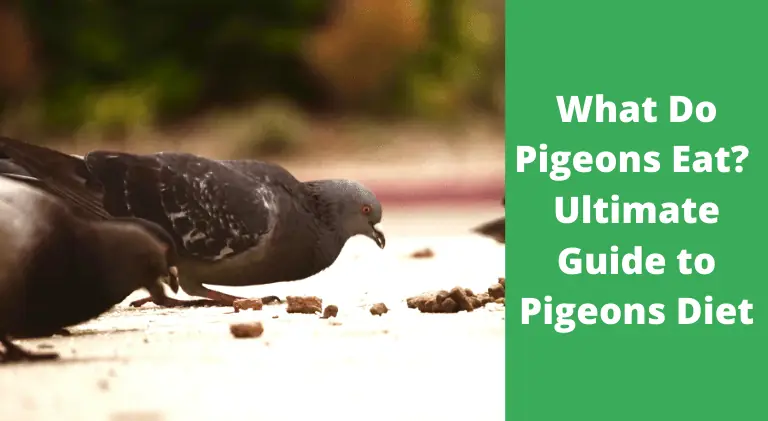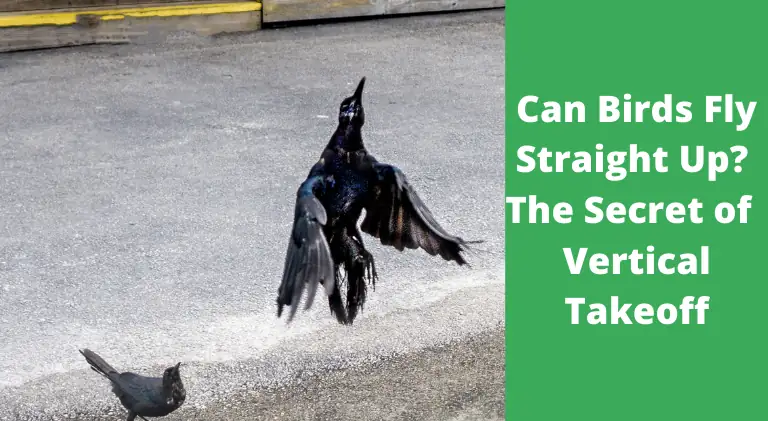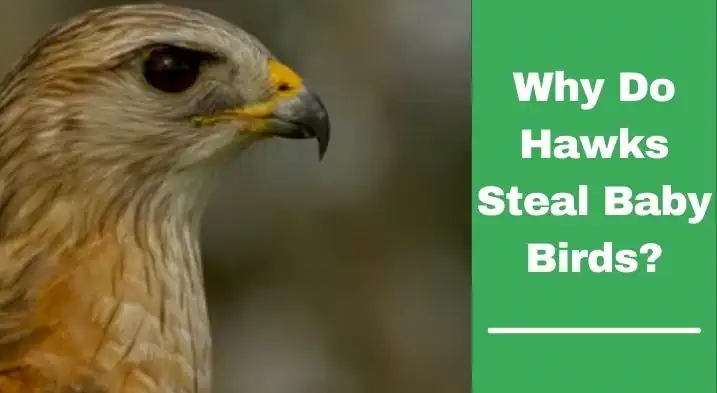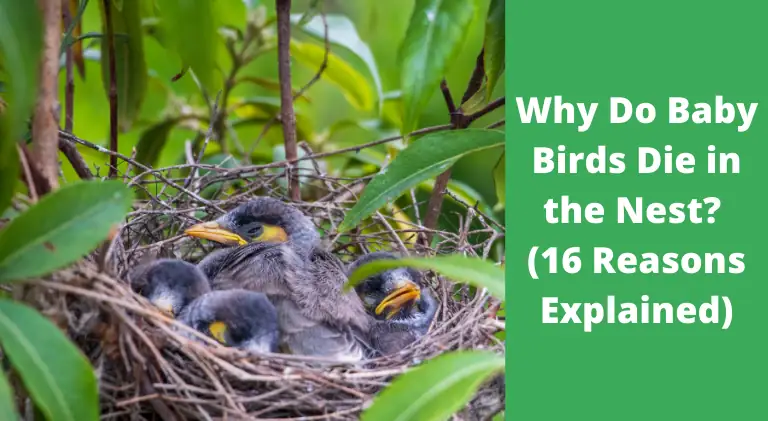Why Do Owls Hoot at Night? [3 Main Reasons]
Owls are nocturnal creatures and as such, they have a particular schedule that includes hunting at night. You may have also heard them hooting at night due to which you might be wondering why do owls hoot at night?
Owls hoot at night due to three main reasons. The first and the main reason is to claim their territory and fend off intruders. Secondly, they began hooting when they are finding a mate. Lastly, when they are communicating with their partners.
However, there’s a lot more to learn when it comes to owls and their hooting habits. For example, did you know that different owl species have different types of hoots? And that each owl’s hoot has a specific meaning?
Luckily, you are in the right place because in the next few sections, you are about to find out why do owls hoot at night. Not only this but you will also learn different types of hoots produced by different species of owls and their meanings.
So without any further ado, let’s get into it and learn the secret behind the hooting of an owl.
Why Do Owls Hoot at Night?

1. Claiming Their Territory and Fending of Intruders
One reason why owls hoot at night is that they are claiming their territory and fending of intruders. In an owl species, it is the males who do all the hooting. They usually stand on a tree branch and hoot to mark their territory.
Their hoots are meant to intimidate other males who might want to enter the same territory. Since owls can see at night, they also use this time to patrol their territories and look for any signs of intruders.
2. Finding a Mate
Another reason why do owls hoot at night is that they are looking for a mate. As I said before, it is the males who do all the hooting in an owl species. They usually perform their hooting act during twilight times like right after sundown and right before sunrise.
However, owls don’t hoot randomly; instead, they perform a certain type of hoot that is unique for every owl species. You can learn more about that in the next section!
Owls also know when it’s time to hoot because they begin hooting when their testosterone level rises. This happens during the mating season which is between January and February for most owl species.
3. Communicating with Their Partners
Last but not least, owls hoot at night to communicate with their partners. Owls use different types of hoots for different purposes. For example:
Male long-eared owls emit a far-carrying and tremulous hooting sound that lasts for more than 3 seconds and resembles the cry of a young rabbit.
Snowy owls emit a far-carrying hoot that often sounds like haa-haa-haa.
Barn owls produce two types of hoots: the first one is named the ‘bouncing ball call’ and it lasts for more than 2 seconds. The second type is described as nasal, rasping, and descending in volume.
Short-eared owls emit a tremulous hoot followed by a higher-pitched expiration that sounds like weeping.

How Do You Differentiate Owl Hoots?
Now that you have learned different species of owls can produce different types of hoot, your next question might be well, how to differentiate them? The first thing that you need to do is to observe the type of hoot closely.
Listen to the pattern and you will be able to differentiate between each type of hoot produced by owls. If the hoot is louder and more dramatic then it indicates that the owl is being aggressive. There is a higher chance that he is protecting his territory.
However, if the hoot is shorter and in a specific series that means a duet with two owls hooting back and forth to communicate with each other and strengthen their bonding. Apart from that, if you hear short hoots and usually two phrased ones then it means that the owl is giving an inspection call to check if things are ok.
What owl hoots 3 times?
The great horned owl usually hoots 3 times and produces a sound like hoo-hoo-hoo in a fixed pattern. There are a couple of reasons due to which they hoot in this specific pattern. The first thing is to mark their presence in the territory so that they can easily fend off intruders.
The next main reason is to let their mates know where they are. Apart from that, they might also be hooting this way to claim their food and impress other owls.
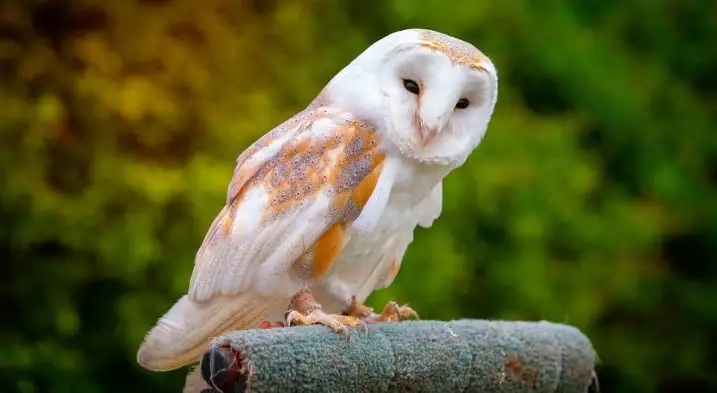
What owl has the deepest hoot?
The great horned owl has the deepest and most intimidating hoot among all other owls. This specific species of owl produces a very deep and low-pitched sound that can be heard from up to 1 mile away which is quite impressive if you consider it!
Owls produce different types of calls depending on what they want to communicate with their mates or other birds. Usually, they have one main call for attracting their mates and then 4-5 series of clicks when they are angry or irritated which means that somebody is in their territory.
Apart from that, there is also another type of unique call produced by male great horned owls when they are in estrous.
Why do owls screech constantly?
Owls might screech constantly during the mating season because they are trying to establish their territory and mark it with a unique song that can travel up to 3 miles. In addition to this, sometimes they might feel threatened due to which they screech constantly.
If they see any predator such as a snake etc, especially if the owl is a female then she will try her best to scare off the predator. Her main goal will be to prevent it from getting into the nest and eating the eggs.
Apart from that, males usually screen constantly whenever they are fighting with other owls. However, this happens very less because owls are mostly busy in hunting during the night time therefore, they don’t fight that often with each other. However, sometimes they do fight especially when another owl enters the territory.
What time of year do owls come out?
Owls come out during the winter season mostly, therefore, if you are living near woods, you will often hear them hooting during the nighttime. However, owls also come out during the summer season of the year but you will hear them more often in winters.
Perhaps one of the main reasons behind this is that during winters there is usually less noise at night. Thus you can easily hear them hooting and tell their presence. While in summers there is usually a lot of noise of the room coolers, ACs and other such things due to which you may not be able to hear them at all.
DO OWLS HOOT IN THE DAYTIME?
No, owls usually don’t hoot in the daytime. This is because they are nocturnal birds due to which they are mostly active at night. During the daytime, they are not able to see due to the bright light of the sun.
Thus they prefer to sleep in their nests or tree cavities along with their chicks or partner instead of hooting during the daytime. Having that said, sometimes you may hear them screeching during the daytime but that is very very rare.
It mostly occurs when an owl is distracted from his way back home and is in distress. Apart from that, you may also hear them hooting if there is a potential predator around the area.
What owl hoots like “who cooks for you, who cooks for you-all?”
The barred owls are mostly known to produce this specific type of sound. They do so during the nighttime in order to communicate with their mates or other birds that they are not threatened.
The female owls produce this sound more often which means that they might be looking for a partner or trying to attract the male owls so that they can mate and reproduce.
Apart from that, maybe one other reason behind why barred owls hoot like “who cooks for you, who cooks for you-all?” is that they do it to attract their prey. They produce this sound to attract the other birds and then hunt them down for food.
Last Minute Thought
So Why Do Owls Hoot at Night?
Owls usually hoot at night when they are hunting and searching for prey. They also do so in the mating season and most often you will hear this sound between September and February.
Hope we helped answer your question! If so, please be sure to share it with others using one of the buttons provided below
References
- Correlates of hoot rate and structure in male Tawny Owls Strix aluco: implications for male rivalry and female mate choice
- Indicators of male quality in the hoots of tawny owls (Strix aluco)
- Territorial behavior of the flammulated screech owl
- BY A BARRED OWL
- Indicators of male quality in the hoots of tawny owls (Strix aluco)



